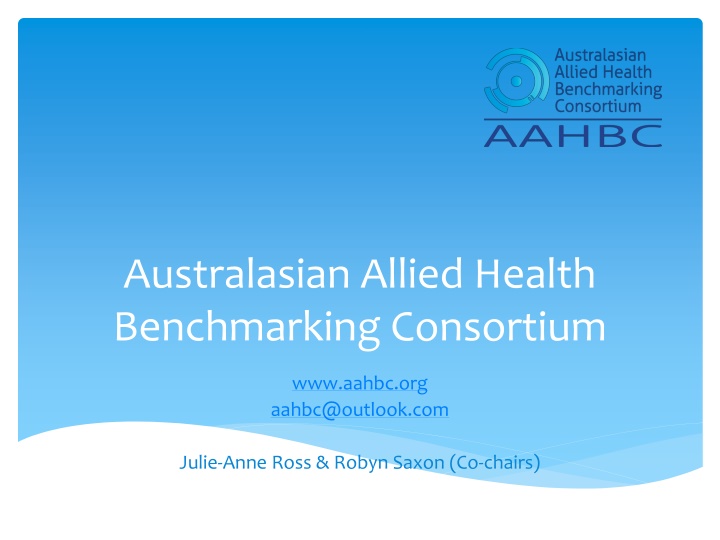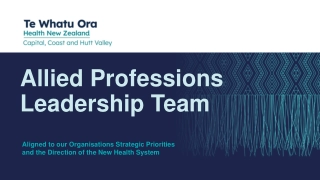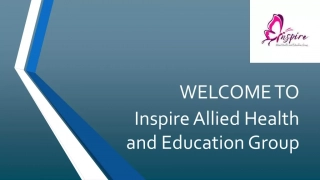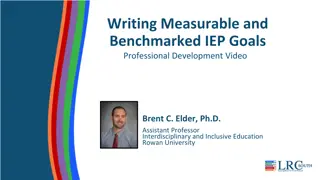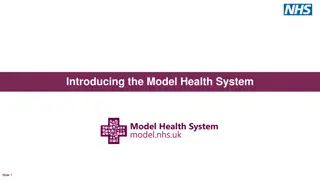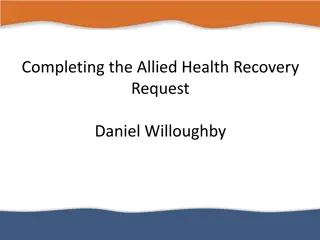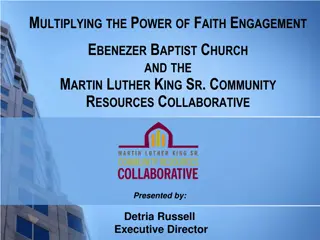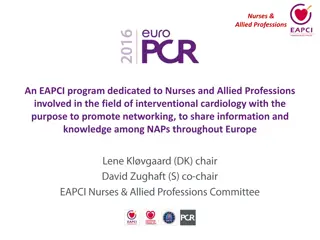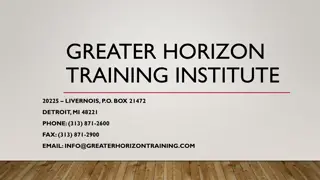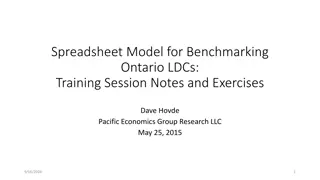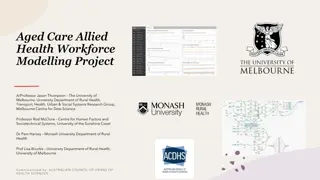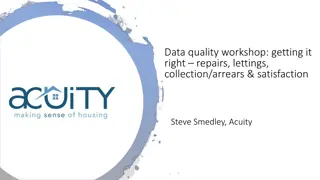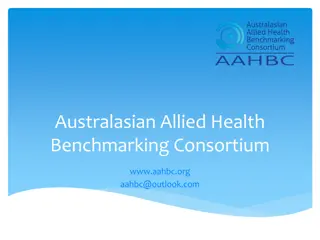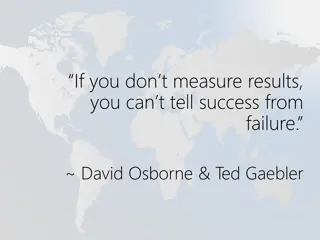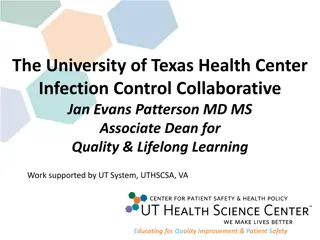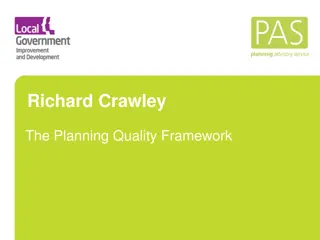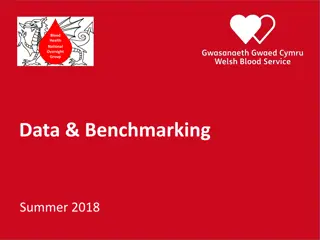Collaborative Allied Health Benchmarking for Quality Outcomes
The Australasian Allied Health Benchmarking Consortium (AAHBC) aims to innovate allied health activities and workforce initiatives to ensure evidence-based and quality outcomes. Their projects include benchmarking, collaboration, and promotion, focusing on data collection, staff modeling, and more. Members from tertiary hospitals in Australia and New Zealand participate in bi-monthly meetings to enhance collaboration and networking opportunities.
Download Presentation

Please find below an Image/Link to download the presentation.
The content on the website is provided AS IS for your information and personal use only. It may not be sold, licensed, or shared on other websites without obtaining consent from the author.If you encounter any issues during the download, it is possible that the publisher has removed the file from their server.
You are allowed to download the files provided on this website for personal or commercial use, subject to the condition that they are used lawfully. All files are the property of their respective owners.
The content on the website is provided AS IS for your information and personal use only. It may not be sold, licensed, or shared on other websites without obtaining consent from the author.
E N D
Presentation Transcript
Australasian Allied Health Benchmarking Consortium www.aahbc.org aahbc@outlook.com Julie-Anne Ross & Robyn Saxon (Co-chairs)
Why? Purpose of AAHBC is to collaboratively innovate allied health activity and workforce initiatives to ensure evidence based and quality outcomes for consumers, staff and our organisations.
What? Benchmarking, collaboration & promotion AAHBC projects Online learning platform for the minimum data set Annual minimum data set audit (offered nationally) Published clinical care ratio recommendations (new publication pending) Staff modelling & recommendations Data collection and reporting - reviewing alignment with the NBPDS Collating barriers and facilitators for reporting from the eMR Position paper for allied health staffing within acute and rehabilitation settings for adults within tertiary teaching hospitals
How? Meet bi-monthly via Microsoft Teams, and aim for one face to face meeting each year Informal working groups and collaborations Regular informal networking amongst members Website Conferences and networking to promote AAHBC outcomes and opportunities for collaboration
Who? Allied Health representatives from tertiary, teaching hospitals across Australia and New Zealand Current members Australia ACT Canberra Hospital NSW Wollongong Hospital QLD Gold Coast University Hospital Princess Alexandra Hospital The Prince Charles Hospital Sunshine Coast University Hospital SA Flinders Medical Centre Lyell McEwin Hospital Royal Adelaide Hospital TAS VIC WA Launceston General Hospital Royal Hobart Hospital The Alfred Hospital Geelong Hospital The Northern Hospital St Vincent s Hospital Sunshine Hospital Sir Charles Gairdner Hospital New Zealand Under review Presentation to NAHSTIG (National Allied Health Scientific Technical Informatics Group)
Who? Membership criteria Tertiary, teaching hospitals Use of Health Activity Hierarchy to collect Allied health Activity data (formerly Allied Health Classification System) Compliance with annual data audit Agreement for each site to contribute to one project annually Willingness to participate in second yearly rotating Chair roster based on location (State, Territory, NZ) Current membership fee is $100/year + GST
What next? Future projects include Commence PROMS & PREMS in allied health multi-site research Best practice statement for allied health data collection Demonstrate value based healthcare through examples of health economics in use Case studies of AAHBC collaborations (e.g. Increased staffing allocation)
What next? How can we work together? What are your priorities?
